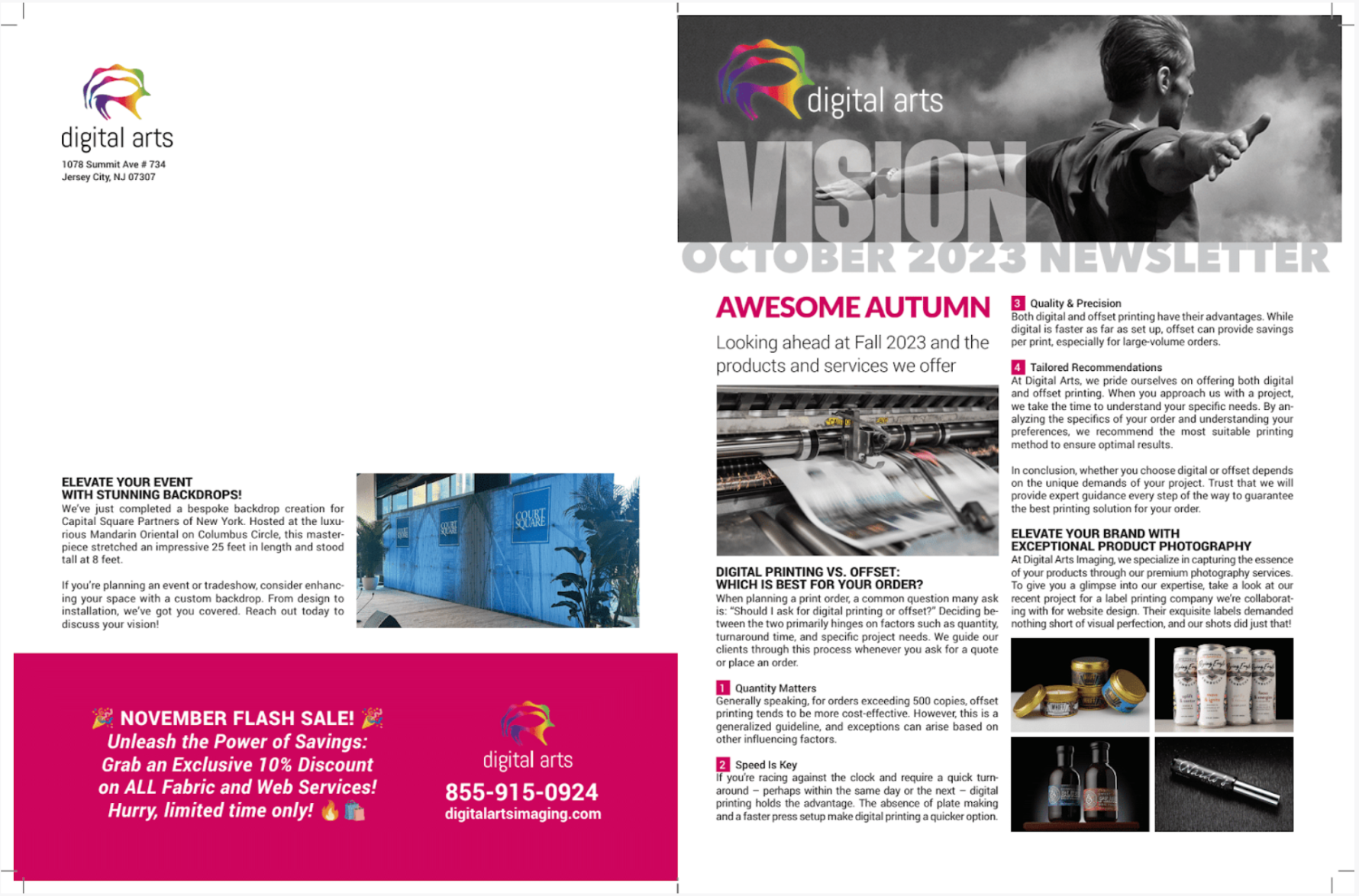Digital Printing vs. Offset Printing: A Comprehensive Comparison for Optimal Print Choices
Introduction
As the world of print continues to evolve, the age-old debate between digital printing and offset printing remains at the forefront. Both technologies offer unique advantages. Understanding their differences is crucial for making the right choice for your printing project. In this blog post, we’ll delve into a comprehensive comparison of digital printing vs. offset printing. In addition, we’ll highlight the benefits and drawbacks of each to help you decide which method is best for your needs.
Digital Printing: A Modern Approach to Print Production
What is Digital Printing?
Digital printing refers to a modern method of printing that uses electronic files and digital printers to produce high-quality images and text on various substrates. This technology eliminates the need for traditional plates and other prepress steps, making it a more efficient choice for small to medium-sized print runs.
Advantages of Digital Printing
- Quick Turnaround Time: Digital printing offers a faster production time compared to offset printing. There is no need for plates or lengthy setup processes. This allows for quicker delivery of your printed materials.
- Cost-Effectiveness for Small Print Runs: Digital printing is more cost effective for smaller print runs. There are no setup costs associated with plates or other prepress steps.
- Variable Data Printing: Digital printing allows for easy customization, making it perfect for printing materials with variable data, such as personalized marketing materials or direct mail pieces.
- Eco-Friendly: With less chemical usage and waste, digital printing is often considered a more environmentally friendly option compared to offset printing.
Disadvantages of Digital Printing
- Limited Substrate Options: Digital printing is not always suitable for all substrate types, such as very thick or textured materials, which may limit its applications.
- Less Color Consistency: Although digital printing technology has improved significantly, it may still struggle with color consistency compared to offset printing, especially for large print runs.
Offset Printing: A Traditional Choice for High-Quality Prints
What is Offset Printing?
Offset printing is a traditional print method that transfers ink from a plate to a rubber blanket, and finally onto the printing surface. This method is known for producing high-quality, consistent prints. It is the go-to choice for large print runs and color-critical projects.
Advantages of Offset Printing
- Superior Image Quality: Offset printing offers unmatched image quality, with crisp lines and consistent colors, making it ideal for projects where image quality is a top priority.
- Cost-Effectiveness for Large Print Runs: The per-unit cost of offset printing decreases as the print run size increases, making it a more economical choice for large print runs.
- Versatility: Offset printing is compatible with a wide range of substrates, including thick or textured materials, offering more flexibility in the choice of materials for your project.
Disadvantages of Offset Printing
- Longer Setup Time: Offset printing requires a longer setup time due to the need for plates and other prepress steps. This may result in a longer turnaround time.
- Higher Initial Costs: The setup costs associated with offset printing can be prohibitive for smaller print runs. That can make it a less cost-effective option in those cases.
Digital Printing vs. Offset Printing: Which is Right for You?
When choosing between digital printing and offset printing, consider factors such as your project size, budget, turnaround time, substrate choice, and image quality requirements. Digital printing is ideal for smaller print runs, quick turnarounds and specialty printing. Offset is better for large runs and jobs that have longer turnarounds. There is a sweet spot where they do converge. That spot has moved towards digital as the technology has improved and costs have decreased. Interested in why printing is still important? Learn more with this blog 10 Reasons Why Printing Services are Still Essential in a Digital Age.

